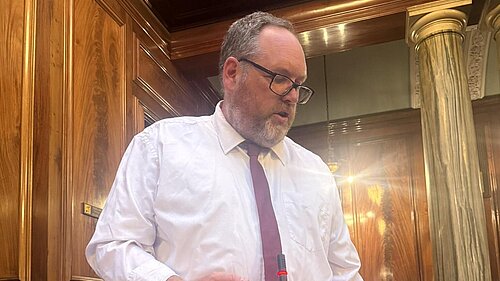Electric Vehicle Home Charging - Increasing Access Across the District

As electric vehicles (EVs) become more common across the UK, no one must be left behind in the transition to cleaner transport. That’s why I brought a motion for debate to the recent Bradford Council Meeting.
Did you know?
A council motion is a formal proposal submitted by a councillor for discussion and decision at a council meeting. It typically sets out a specific issue, concern, or action the councillor wants the council to consider. If agreed upon, it can lead to new policies, initiatives, or changes to council processes.
Supporting On-Street and Near-Home EV Charging is a motion which aims to ensure all residents, regardless of where they live or how much they earn, can access the benefits of electric vehicles.
A Local Problem with National Consequences
The motion was shaped by conversations with residents in Eccleshill, many of whom are ready to make the switch to an EV but face one major obstacle: they don’t have a driveway.
Across our district, this is a familiar story. In areas like Manningham, Bradford Moor, Eccleshill, Keighley, Bingley, and Bowling, off-street parking is a luxury. Families in these neighbourhoods often rely on older terraced housing with little or no private parking. Yet many of them still need a car to get to work, school, or hospital appointments.
So, what happens when these residents want to switch to an electric vehicle? Without access to affordable and convenient charging, they face high costs, limited options, and a frustrating sense of exclusion from the green transition.
A Two-Tier System We Can’t Afford
This isn’t just a local inconvenience. It’s a systemic unfairness that risks deepening inequalities. The communities with the worst air pollution, often our most deprived areas, are the ones being hit hardest. Families struggling with energy bills and the cost of living are being priced out of the EV revolution.
If you can charge at home, you benefit from just 5% VAT on electricity. If you're reliant on public chargers, you pay 20% VAT. That’s a 15% tax penalty, or about £1,000 more per year for those without a driveway. This isn’t just inefficient, it’s unjust.
What the Motion Proposes
- Pilot pavement cable channels so residents can charge safely from their homes.
- Expand the rollout of lamppost and bollard chargers where feasible.
- Maximise use of LEVI funding (Local Electric Vehicle Infrastructure) to support installation.
- Lobby the government for VAT reform and a national Right to Charge, ensuring fairness regardless of housing type.
These are not ideological demands. They are common-sense solutions designed to make clean transport more accessible and affordable.
Recognising the Work Already Done
It’s important to acknowledge that progress is already underway. The council has:
- Set early EV-ready planning requirements for new developments.
- Partnered with ‘GeniePoint’ to roll out rapid charging infrastructure.
- Recently committed to reviewing Highways policies to support on-street EV charging, as announced in last week’s press release.
Debunking the Myths
The Conservative Councillors attempted an amendment that played on myths and conspiracy theories; their intervention distracts from the real issues. It raises concerns about power shortages without offering solutions to the residents who are currently locked out of EV ownership.
But the reality is: on-street charging enables smarter, off-peak energy use. It reduces pressure on rapid-charging stations and helps balance the grid. This isn’t a threat—it’s an opportunity.
Putting Equity at the Heart of Climate Action
We’re facing a climate emergency, and time is short. But urgency should never come at the expense of fairness.
The Liberal Democrat motion is about more than cables and chargers. It’s about removing barriers, levelling the playing field, and ensuring that cleaner air and lower costs are not just reserved for the better-off.